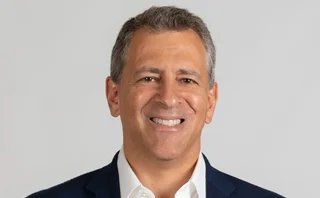
Commodity derivatives house of the year, Asia: BNP Paribas
Energy Risk Awards Asia 2020: Amid unprecedented volatility, French bank reacts swiftly with hedging and financing solutions throughout commodities complex
It’s been an extraordinary year for the world’s commodity markets. Since the onset of the Covid-19 pandemic, 2020 has seen multi-year lows in base metals followed by dramatic recoveries, dislocations in gold prices of $70 an ounce between New York and London, while the West Texas Intermediate crude oil price briefly went negative, and volatility in the Brent oil contract exceeded 100% for the first time.
For BNP Paribas’ commodity derivatives operation in the Asia-Pacific region, the volatility generated significant flow business for clients, says Mikko Rusi, Singapore-based head of FX, local markets and commodity derivatives, Apac. “But we’ve also been able to close strategic, one-off hedging transactions, whether for mining companies or commodity consumers,” he says. “The volatility clearly created opportunities to help customers.”
For example, Rusi cites the case of the owners of an Indonesia oil and gas asset, which found that, due to the Covid-related drop in oil prices, its hedging book – which was linked to the project’s financing – had become substantially in-the-money. The market volatility provided an opportunity for the client to realise value from the hedge and reduce its funding costs.

“We restructured the hedge by closing it out and adding new hedges with new strikes. The cashflow associated with the restructuring helped reduce the total debt burden for the company while also allowing them to reshuffle the debt schedule,” says Audrey Safra, the Singapore-based head of commodity derivatives, Apac, for BNP Paribas. “They now have a much lower leverage ratio and benefit from some hedging to protect against any downside in oil prices. Overall, the balance sheet of the client has been tremendously improved.”
Unsurprisingly, given the effects of the Covid pandemic on global and regional logistics and transportation, the bank has been active in supporting consumers to manage the impact of extreme market moves on their mark-to-market profiles and volatility through hedging book restructurings. “There were many scenarios across several underlyings … where, depending on each client’s profile and the nature of the hedging books, we’ve been able to customise solutions to reshuffle hedging liabilities,” Safra says.
Rusi also notes that the bank has had a particularly strong year in gold hedging. He cites a landmark five-and-a-half-year structured gold hedge with an Australian polymetallic producer, for which BNP Paribas was also acting as a co-underwriter for a long-term debt facility. The hedge took advantage of the low Aussie dollar rate and the race-up in the gold price to lock in “record levels” on both elements of the hedge. “Key to the completion of the transaction was our ability to manage the risk of multiple asset classes concurrently over such a long-tenor,” he says.
But BNPP’s commodity derivatives business this year has not only been about reacting to the current market – it has also involved looking forward to challenges to come. Safra highlights a small – but meaningful – carbon offset trade, involving a South-east Asian institution buying voluntary emission reductions (VERs), generated by the Kasigau Corridor forest conservation project in Kenya, to offset its estimated annual carbon footprint.
It is an example of how the company has been building its capabilities and market knowledge around regional VER markets. The team expects interest in VERs from Asian clients to continue growing in the coming months.
Helping clients to manage the energy transition and move towards sustainable goals is a huge part of the bank’s current work, says Safra. “BNPP is extremely engaged in the sustainability topic,” she says. Getting involved in environmental markets “is an easy decision for commodities from a business standpoint … We are trying to get on the forefront of the products that are being developed and to help our clients get on a more sustainable path.”
Only users who have a paid subscription or are part of a corporate subscription are able to print or copy content.
To access these options, along with all other subscription benefits, please contact info@risk.net or view our subscription options here: http://subscriptions.risk.net/subscribe
You are currently unable to print this content. Please contact info@risk.net to find out more.
You are currently unable to copy this content. Please contact info@risk.net to find out more.
Copyright Infopro Digital Limited. All rights reserved.
As outlined in our terms and conditions, https://www.infopro-digital.com/terms-and-conditions/subscriptions/ (point 2.4), printing is limited to a single copy.
If you would like to purchase additional rights please email info@risk.net
Copyright Infopro Digital Limited. All rights reserved.
You may share this content using our article tools. As outlined in our terms and conditions, https://www.infopro-digital.com/terms-and-conditions/subscriptions/ (clause 2.4), an Authorised User may only make one copy of the materials for their own personal use. You must also comply with the restrictions in clause 2.5.
If you would like to purchase additional rights please email info@risk.net
More on Commodities
Energy Risk Asia Awards 2025: The winners
Winning firms showcase the value of prudent risk management amid challenging market conditions
Data and analytics firm of the year: LSEG Data & Analytics
Energy Risk Awards 2025: Firm’s vast datasets and unique analytics deliver actionable insights into energy transition trends
OTC trading platform of the year: AEGIS Markets
Energy Risk Awards 2025: Hedging platform enhances offering to support traders and dealers in unpredictable times
Electricity house of the year: Natixis CIB
Energy Risk Awards 2025: Bank launches raft of innovative deals across entire electricity supply chain
Voluntary carbon markets house of the year: SCB Environmental Markets
Energy Risk Awards 2025: Environmental specialist amplifies its commitment to the VCM
Sustainable fuels house of the year: Anew Climate
Energy Risk awards 2025: Environmental firm guides clients through regulatory flux
Weather house of the year: Parameter Climate
Energy Risk Awards 2025: Advisory firm takes unique approach to scale weather derivatives markets
Hedging advisory firm of the year: AEGIS Hedging
Energy Risk Awards 2025: Advisory firm’s advanced tech offers clients enhanced clarity in volatile times








